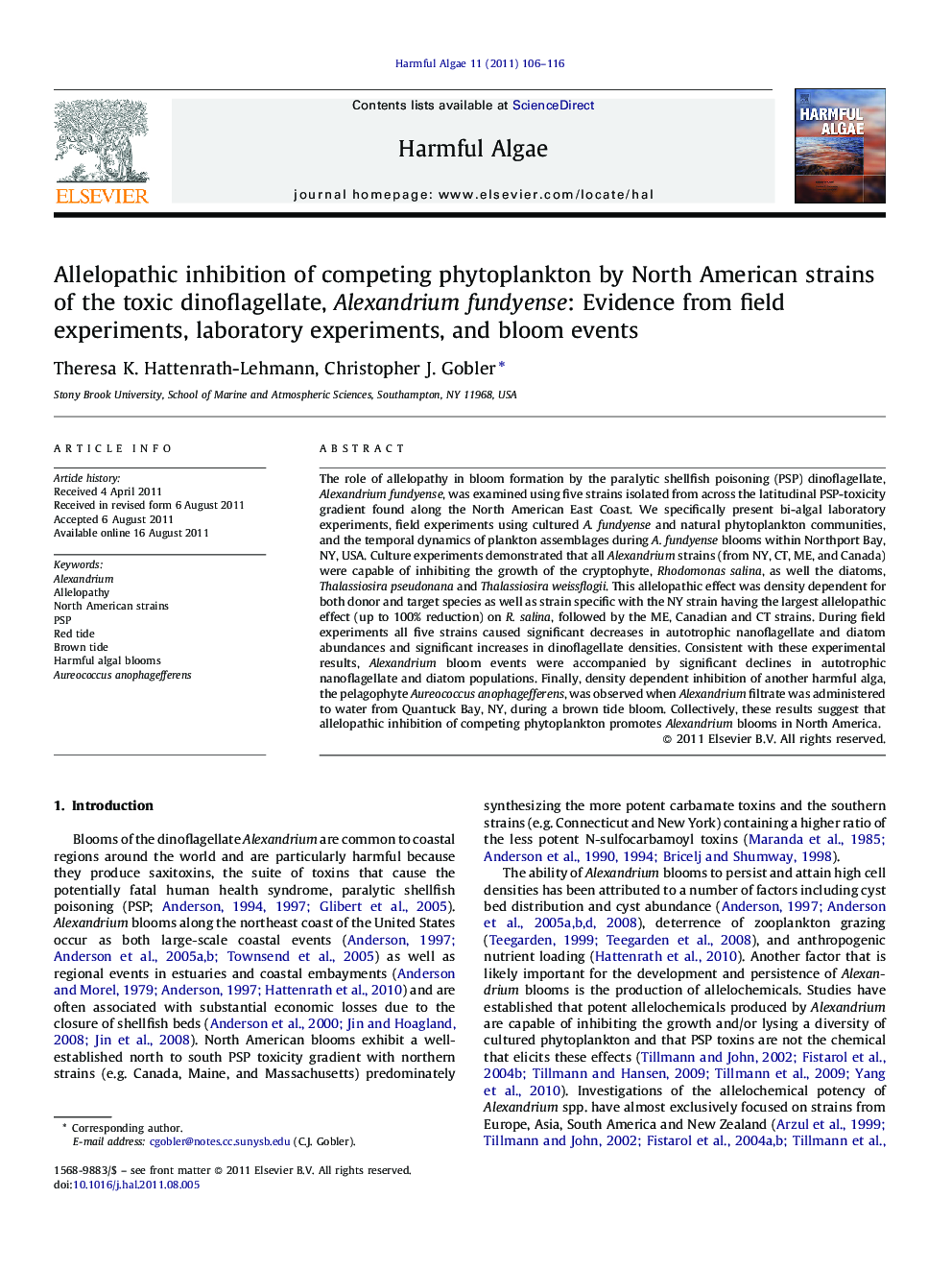| Article ID | Journal | Published Year | Pages | File Type |
|---|---|---|---|---|
| 4545604 | Harmful Algae | 2011 | 11 Pages |
The role of allelopathy in bloom formation by the paralytic shellfish poisoning (PSP) dinoflagellate, Alexandrium fundyense, was examined using five strains isolated from across the latitudinal PSP-toxicity gradient found along the North American East Coast. We specifically present bi-algal laboratory experiments, field experiments using cultured A. fundyense and natural phytoplankton communities, and the temporal dynamics of plankton assemblages during A. fundyense blooms within Northport Bay, NY, USA. Culture experiments demonstrated that all Alexandrium strains (from NY, CT, ME, and Canada) were capable of inhibiting the growth of the cryptophyte, Rhodomonas salina, as well the diatoms, Thalassiosira pseudonana and Thalassiosira weissflogii. This allelopathic effect was density dependent for both donor and target species as well as strain specific with the NY strain having the largest allelopathic effect (up to 100% reduction) on R. salina, followed by the ME, Canadian and CT strains. During field experiments all five strains caused significant decreases in autotrophic nanoflagellate and diatom abundances and significant increases in dinoflagellate densities. Consistent with these experimental results, Alexandrium bloom events were accompanied by significant declines in autotrophic nanoflagellate and diatom populations. Finally, density dependent inhibition of another harmful alga, the pelagophyte Aureococcus anophagefferens, was observed when Alexandrium filtrate was administered to water from Quantuck Bay, NY, during a brown tide bloom. Collectively, these results suggest that allelopathic inhibition of competing phytoplankton promotes Alexandrium blooms in North America.
► We present field and laboratory allelopathy experiments with Alexandrium fundyense. ► Alexandrium cultures and culture filtrate inhibited the growth of autotrophic nanoflagellate and diatoms. ► These same planktonic groups declined during Alexandrium blooms. ► Alexandrium culture filtrate inhibited the growth of Aureococcus anophagefferens during a brown tide. ► Allelopathic inhibition of phytoplankton promotes Alexandrium blooms in North America.
